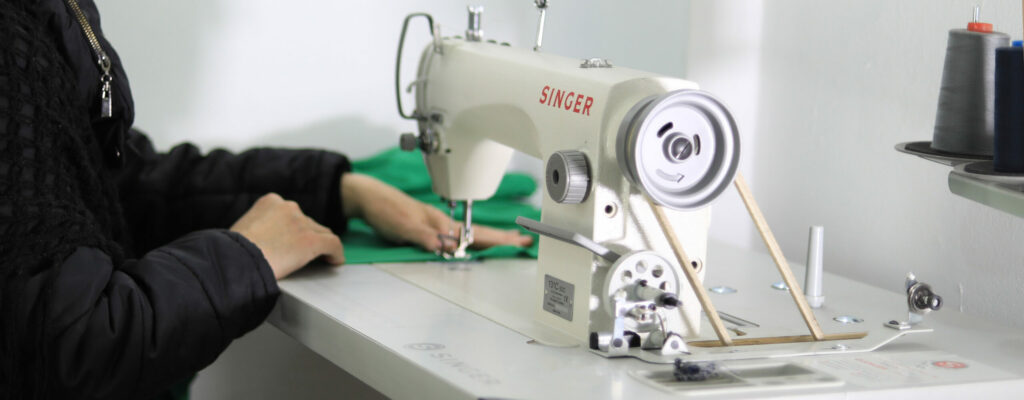Preserving the Heritage for Future Generations by a Jordanian Woman

“The traditional embroidery has found a place in the local markets and reserved a place in the world of fashion” Layali said.
Layali Akawneh from Baleila village – Jerash is one of the women who can adorn textiles with colorful threads, converting the traditional forms and Arabic scripts to designs.
The consultant of computer-aided embroidery who has a bachelor’s degree in psychological counselling says, “I am proud of my achievements. She adds that my hobbies are artistic, including fashion design, and the coordination of colors. Thus I mustered these hobbies to establish a productive project. Today we reached Bleila where one of the workshops of Al-Nur of the “AZEM” project is located (which is supported by UNICEF and implemented by BDC).
Layali established her own business in her home. Women in this village suffer from the problem of transportation and work outside of the village, she harbored the idea of being self-employed, but the challenge which faced her was how to acquire an embroidery machine.
Layali explains that she can embroider any shape, within an effort through which she strives to secure the needs of her family, she strives to convey this tradition to women through holding vocational courses, and it is also an attempt to revive an old tradition through holding exhibitions.
Layali Akawneh was one of the distinguished women for whom challenges intensified her insistence and will to achieve their dreams of self-employment and to adorn textiles with colorful threads, converting the traditional forms and Arabic scripts to designs which reflected traditional geometric patterns.
The consultant of computer-aided embroidery who has a bachelor’s degree in psychological counselling says, “I have known since the beginning the meaning of success and I take pride in my achievements, pointing out that the design and production of eastern embroidery that is handmade requires time, effort and cost, which in the beginning was a challenge. She adds that my hobbies are artistic in general, including fashion design, computer-aided embroidery design and the coordination of colors. Thus I mustered these hobbies to establish a productive project which became a source of income for me and my family, pointing out that Jordanian women should have an influential role in conveying the heritage to the sons and daughters of this and future generations. Today we reached Bleila village where one of the workshops of Al-Nur of the “AZEM” project is located. There a new story is told of a woman who dedicated most of her time to practice what she excels in namely, embroidery on various materials of all traditional and popular patterns and shapes.
Layali Akawneh established her own business in her home which catapulted her to the paths of success and progress. She lives in Baleila village which is located in northern Jordan and is administratively linked to the Jerash governorate. Women in this village suffer from the problem of transportation and work outside of the village due to this problem, where she used to work as a trainer of tailoring and embroidery in one of the companies, but she harbored the idea of being self-employed all the time, but the challenge which faced her was how to acquire a sewing and embroidery machine.
Layali explains that she can embroider any shape on clothes and cloths and she operates according to orders she receives, irrespective of size, within an effort through which she strives to secure the needs of her family, pointing out that some orders take time to implement of around one week. She adds that the business has become an important and rewarding source of income for the family.
Akawneh hopes to acquire an embroidery machine to reduce the financial burdens on her, where presently she designs shapes, phrases and drawings based on orders from the customers, pointing out that the traditional embroidery has found a niche in local markets and in the world of fashion, for there are women who have found in embroidery an occupation and a means to creativity in addition to preserving this popular tradition.
She refers to the great demand of women for clothes that are adorned with embroidery and are fashion inclined, and she says that the traditional dress has now become embroidered with varied shapes, while she persistently strives to convey this tradition to women through holding vocational courses to encourage them to learn embroidery, and it is also an attempt to revive an old tradition through holding various exhibitions and bazaars